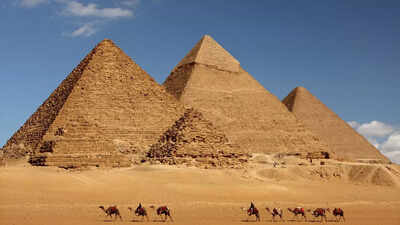Trending
Egypt’s pyramids hide a shocking secret—scientists reveal what’s below
Researchers from Italy and Scotland claim to have discovered a vast underground city over 6,500 feet under the Pyramids of Giza using radar technology. Significant structures, including massive pillar-like formations and chambers, were identified, potentially reshaping the understanding of Giza's sacred topography.
With the advancement in technology and scientific tools, each day new discoveries about the world that we inhabit continue to surprise us. This time a discovery in the archaeological world is causing quite a stir. Researchers from Italy and Scotland claim to have uncovered a vast underground city stretching over 6,500 feet under the Pyramids of Giza.
Using radar technology, the team mapped out what they describe as a sprawling network of structures hidden beneath one of the world's most iconic ancient sites. At a press briefing on March 15, project spokesperson Nicole Ciccolo announced, “This study redefines the boundaries of satellite data analysis and archaeological exploration.”
The researchers believe they have located several significant structures, including eight massive, pillar-like formations buried beneath the base of the Khafre Pyramid. These cylindrical wells, reportedly over 2,100 feet deep, appear to be surrounded by spiraling pathways that connect to two enormous cube-shaped chambers. With each chamber measuring around 80 meters.

Notwithstanding, the Khafre Project team is eager to begin excavations to confirm their findings, but obtaining permission from Egyptian authorities will be no easy task. The discoveries, led by researchers Corrado Malanga from Italy’s University of Pisa and Filippo Biondi from Scotland’s University of Strathclyde, still await peer review before being accepted by the wider academic community.
This revelation follows another recent discovery of an unusual L-shaped structure beneath the royal Giza cemetery. Scientists believe that structure is not naturally formed. Additionally, new research on skeletons found in Egyptian pyramids at Tombos has raised questions about who was buried there. Instead of royal elites, the remains show signs of hard labor, suggesting these individuals were low-status workers who, for unknown reasons, were laid to rest alongside nobility.
If confirmed, this discovery could change our understanding of the Giza Pyramids and their hidden history. However, further research and excavation are needed to verify these findings and uncover the full story beneath the sands of Egypt.
End of Article
FOLLOW US ON SOCIAL MEDIA
Visual Stories
Tired of too many ads?










